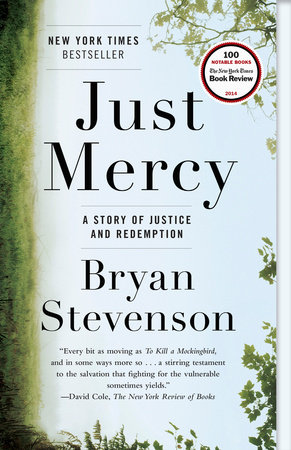 Many BookNotes readers and Hearts & Minds customers know of my great, great appreciation for legal aid advocate Bryan Stevenson and his spectacular book Just Mercy: A Story of Justice and Redemption (Spiegel & Grau; $28.00.) We named it one of the Best Books of 2014, offered links to interviews and TED talks, (bragged that he came out of Eastern University and that he spoke at Jubilee in Pittsburgh.) We’ve promoted it most places we’ve gone the last half a year, and sometimes have read out loud Desmond Tutu’s endorsement exclaiming how thrilling the book was to read, and how important. Regarding the stories of flagrant legal injustices, often racially-tinged, that are so well told in Just Mercy and Mr. Stevenson’s persistent and faithful advocacy, to achieve criminal justice for poor folks, the mentally impaired, children, even, Tutu declares what hangs in the balance: “Nothing less than the soul of a great nation.”
Many BookNotes readers and Hearts & Minds customers know of my great, great appreciation for legal aid advocate Bryan Stevenson and his spectacular book Just Mercy: A Story of Justice and Redemption (Spiegel & Grau; $28.00.) We named it one of the Best Books of 2014, offered links to interviews and TED talks, (bragged that he came out of Eastern University and that he spoke at Jubilee in Pittsburgh.) We’ve promoted it most places we’ve gone the last half a year, and sometimes have read out loud Desmond Tutu’s endorsement exclaiming how thrilling the book was to read, and how important. Regarding the stories of flagrant legal injustices, often racially-tinged, that are so well told in Just Mercy and Mr. Stevenson’s persistent and faithful advocacy, to achieve criminal justice for poor folks, the mentally impaired, children, even, Tutu declares what hangs in the balance: “Nothing less than the soul of a great nation.”
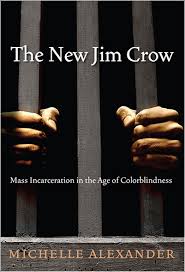 More readable, I think, than the definitive and compelling The New Jim Crow: Mass Incarceration in an Age of Colorblindness by Michelle Alexander (The New Press; $19.95) Just Mercy stands alongside her work as a must read for anyone wanting to understand racial tensions, crime and punishment in our age.
More readable, I think, than the definitive and compelling The New Jim Crow: Mass Incarceration in an Age of Colorblindness by Michelle Alexander (The New Press; $19.95) Just Mercy stands alongside her work as a must read for anyone wanting to understand racial tensions, crime and punishment in our age.
You know we appreciate these two, as we’ve said it before.
Well, a few months ago the same prestigious publisher who released Just Mercy, Spiegel & Grau, released another stunning work, now surely another must-read book on similar, related themes. I didn’t think it was possible, but this one is even more riveting and page-turning than Just Mercy. And it is a bit more complicated, with a bit more going on. But one thing that is clear: there are racial dimensions to the large numbers of black men killed in American and it is astonishing we don’t talk about it much.
GhettoSide: A True Story of Murder in America Jill Leovy (Spiegel & Grau) $28.00
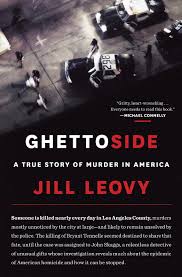 GhettoSide: A True Story of Murder in America was written over many years of detailed research by Jill Leovy, an award-winning reporter for the Los Angeles Times who certainly deserves acclaim and honor for her extra-ordinary work documenting how mostly black-on-black murders in Compton and other parts of South L.A. are investigated and prosecuted. I would suggest that if anyone wants to understand episodes such as the uprising in Ferguson MO or the riots in Baltimore, the recent national conversation about community policing, or, for that matter, if one wants to understand the real life work of criminal investigation and gritty urban police work (beyond Law and Order or Blue Bloods) this is the book to read. In fact, if you like those popular police shows, you will love this book.
GhettoSide: A True Story of Murder in America was written over many years of detailed research by Jill Leovy, an award-winning reporter for the Los Angeles Times who certainly deserves acclaim and honor for her extra-ordinary work documenting how mostly black-on-black murders in Compton and other parts of South L.A. are investigated and prosecuted. I would suggest that if anyone wants to understand episodes such as the uprising in Ferguson MO or the riots in Baltimore, the recent national conversation about community policing, or, for that matter, if one wants to understand the real life work of criminal investigation and gritty urban police work (beyond Law and Order or Blue Bloods) this is the book to read. In fact, if you like those popular police shows, you will love this book.
I’ve been wanting to tell our readers more about this incredible work for months, now (I had already described it briefly when it first came out) waiting both for my own ability to process it all and describe it with something approximating what it deserves, and for the best time to do so, in terms of current events and recent controversies. I must admit that the tragedy in Baltimore – the murder of Freddy Gray, the riots, the arrests of the police officers, and the stressful rounds of comments and arguments on-line that followed, made me not so sure I wanted to share a review at that time. I didn’t want to add to the noise, and I didn’t want the book to be ignored or have BookNotes readers connect it too closely to those events. It is such a good read, such a valuable story, and I have been waiting for the right time to tell about it, but, now, can’t wait any longer.
EPIDEMIC OF VIOLENCE vs JOHN SKAGGS
Here is the short version of what this book is about. In great detail and prose that at times is nearly luminous, Ms. Leovy explains the horrors of inner city crime (most often gang related) and the subsequent police investigations and prosecution of the crimes. (Or, notably, the lack of such investigation and prosecution.) On the front of the book, in stark white letters on a striking black cover, it says “Someone is killed nearly every day in Los Angeles County, murders mostly unnoticed by the city at large – and likely to remain unsolved by the police. The killing of Bryant Tennelle seemed destined to share that fate, until the case was assigned to John Skaggs, a relentless detective of unusual gifts whose investigation reveals much about the epidemic of American homicide and how it can be stopped.”
Yes, that is exactly what it is about, and — whew! — what a long, strange trip it is. Buckle your seat belts and get on board; this train is one you don’t want to miss.
Ghettoside is set in the worst years of the violence in Compton, more than a decade ago, now, statistics about which are breathtakingly bad. I know a bit and have read a lot about urban issues, and I was riveted, knocked back at times, shocked by how bad the situation was. With more deaths each week than in most of our modern wars, why aren’t the crimes known and why aren’t the perps tracked down and brought to justice? This is a huge, complex question. The book maintains that “where the criminal justice system fails to respond vigorously to violent injury and death, homicide becomes endemic.”
In other words, the failure of mostly white police forces to prosecute gang violence (and coupled with para-militarized anti-drug campaigns and policing strategies that provoke more than protect) left a huge gap in urban centers. Black on black violence, as it is sometimes described, occurred in the power vacuum left by the failures of adequate, effective policing and stable institutions of law and of order.
Of course there are huge, complicated and reasons for this vexing abdication of duty. Because this book is written like a true crime thriller, by an excellent journalist at the top of her craft, we learn about big policy matters by way of real stories, real people, real scenarios. As such the book is captivating, and compelling, leaving this reader in tears, sometimes in outrage, shaking his head, smacking his fist against the table, reaching for the tissues.
And I was amazed by the unusual, fiercely dedicated John Skaggs. (More on him in a bit.)
So, so much is so very complicated in this real, fallen world. (Fallen may be the theological word we use to describe the distortion and dysfunctions wrought by sin; many of the characters in Ghettoside would use a different f-word, expressing the same awareness with unsanitized anguish.) From page to page we learn just how broken things are.
DETAILS. MOVING, COMPLICATED DETAILS
Just for instance, when a young boy has part of his head blown off by a drive by shooting – perhaps intentional, perhaps due to a mistaken identity – the scene must be secured by yellow police tape so that forensics scientists can do their work, gathering evidence, bone and blood and bullets. (You’ve seen CSI, no doubt.) However, understandably, in crowded urban centers, aunts and mothers, siblings and lovers gather, sometimes before the police do, to mourn, to share tenderness and grief, and to express outrage. When such murders are nearly common-place rituals and means of mourning develop and outrage is severe, with anger often expressed against the law enforcers who seem to fail, and who most likely will not put much effort into solving this particular crime. If police disrupt the communal grief, try to pull the mother off the body, try to secure the forensics integrity of the crime scene, they are seen as brutes. (And, according to Leovy’s careful research and reporting, they sometimes are., but not always.) However, if the investigators are culturally sensitive or allow the body to be disturbed or removed, it is inevitable they will lose time and evidence. Homicide detectives even have a name for this routine problem of loved ones pulling the deceased away from the scene of the crime, forbidding police – who they do not trust – access, seemingly not aware that they are hindering whatever effort the police may want to expend gathering evidence. The police are harassed and threatened and the initial moments of the investigation are sometimes dangerous, bordering on pandemonium, with anguish and mistrust and more violence breaking out, understandably demoralizing the investigators who seem themselves as trying to help. These investigators may be Latino or black, themselves, although they are often white, and the complexities of class and culture are pressing, even at the start of any given crime’s investigation. And there were sometimes several a day in those years. Reading this was beyond sobering.
Prosecution of inner city gang-related or drug-related crime becomes problematic as well — as we’ve seen on the TV shows, similar, too, to the Mob stories — when eye-witnesses are resistant to speak to the police out of real fear of being targeted for revenge. Again, this is complicated as many urban youth have been demeaned and even harmed by police, so when some investigators surely mean well, and cooperation with them would be in the interest of the neighborhood’s safety, there is still mistrust, deep and profound and lasting. Add to this the fear that the brutal enforcers of the harsh drug lords or uber-loyal gang members threaten the families of the witnesses in the most grotesque ways imaginable, the police investigation is exceedingly, overwhelmingly, difficult. Some rookie cops can’t even imagine why good people won’t cooperate. Others understand.
The first part of this moving work is called “The Plague” which is an overt reference to Camus’ famous novel. (And I thought that the futility of The Myth of Sisyphus would have worked as well.)
But yet, the police soldier on, and Leovy tells — with utter sympathy for the crisis of the neighborhoods, the urban downtrodden, the poor and fearful, the good, bad, and the ugly, the kids and the moms — the story of the often valiant efforts of a few expert detectives to pursue justice.
And this is the heart of the story, good cops trying to do their jobs well, nearly against all odds.
Like the Law and Order episodes there are two parts to every story. There is the true crime investigation (and oh, how Leovy captures the street cops, the homicide detectives, the chiefs and administrators struggling with policy and funding and management) and then there is the lawyering — the courts, the public defenders, the judges, sentencing, prisons. Although the book’s focus is more on the former, there is a bit of the latter as well.
HONEST AND GENEROUS
In what seems to me a passionately honest and yet generous eye, Leovy sees and tells the truth about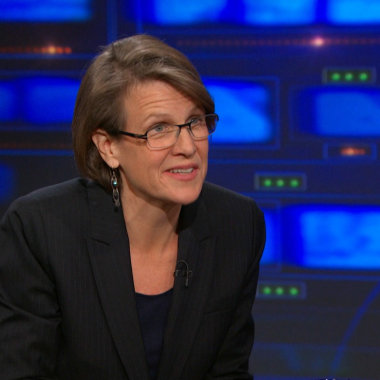 all sides, the different facets and factors, the different people and their stories, their lives and their circumstances, colorful and poignant as they often are. She captures with vibrant prose the nature of inner city street life, the housing projects, the houses and lawns and alleys, the charm and goodness as well as the drugs and violence. She understands inner city lifestyles, the people of many ethnicities that live in the many neighborhoods that make up South Los Angeles County, and with such good writing helps us feel like we understand the nuances and difference between this avenue and that block, between the Crips and the Bloods, the druggies and the preachers and social workers and prostitutes and more. And yet, the book, set in Compton and about urban homicide, is a bigger story, finally about police work, the vocation of being a detective, and the “lucid social critique” she makes about it all.
all sides, the different facets and factors, the different people and their stories, their lives and their circumstances, colorful and poignant as they often are. She captures with vibrant prose the nature of inner city street life, the housing projects, the houses and lawns and alleys, the charm and goodness as well as the drugs and violence. She understands inner city lifestyles, the people of many ethnicities that live in the many neighborhoods that make up South Los Angeles County, and with such good writing helps us feel like we understand the nuances and difference between this avenue and that block, between the Crips and the Bloods, the druggies and the preachers and social workers and prostitutes and more. And yet, the book, set in Compton and about urban homicide, is a bigger story, finally about police work, the vocation of being a detective, and the “lucid social critique” she makes about it all.
Listen to the notable writer Martin Amis,
Jill Leovy writes with exceptional sharpness and tautness, and her pages glow and glitter with the found poetry of the street. This book will take an honored place on the shelf that includes David Simon’s classic Homicide and Michelle Alexander’s explosive study of mass incarceration, The New Jim Crow.
Or, listen to these amazing words of Michael Connelly,
Ghettoside is fantastic. It does what the best narrative nonfiction does: It transcends its subject by taking one person’s journey and making it all our journeys. That’s what makes this not just a gritty, heart-wrenching, and telling book, but an important one. From the patrol copy to the president, everyone needs to read this book.
So, yes, this is the kind of book we feel compelled to promote, and hope you will consider recommending it to your book club, or getting it for your own summer reading.
BRAVE
One reviewer said it was the bravest book bout race and crime he ever saw. I saw that comment before I started the book, and wasn’t sure what it implied. You must read the book yourself to discern if it is true, but Dan Baum (author of Nine Lives) says it is “a thoroughly engrossing true-life policier full of vivid and sympathetic characters, but also the bravest book about race and crime I’ve ever read.”
Ghettoside: A True Story of Murder in America is an amazing book. I’ve suggested that it is important because of how it shows the pain and dignity of the urban poor, gang kids, addicts and street people as well as more ordinary folks trying to live normal lives in dense urban settings. And it shows the pain and dignity of cops and detectives and all sorts of police workers; even if you don’t like detective stories, this is a great read to show this side of this profession. Many of us have opinions about race and crime and city strife and law enforcement – some expressed with great passion, even in posters and sloganeering on line – and it seems to me that our viewpoints ought to be shaped by this sort of reporting. (Do you disagree?) Whether you see yourself as basically liberal or conservative on these kinds of things, whether you try to have understanding for the uprisings in the cities or whether you a revolted by the protests, and think we should just always support our officers in blue, I hope you will agree that we simply must know what really goes on, in the streets and in the precinct headquarters and the squad cars. This book is the best I’ve read on this, the most important book on urban problems I’ve ever seen.
POLITICAL ISSUES
(Although grand policy questions aren’t the primary topic, one learns about how the headquarters in certain precincts in LA County were woefully underfunded, how dumb management foibles of this or that chief had huge impact on how crimes are investigated and adjudicated. Not unlike Jonathan Kozol’s blazing critique of what he calls “savage inequalities” (the way some school districts are well funded and others horribly underfunded and how these disparities are drawn around color lines) Ghettoside exposes some truly unjust institutional issues. From funding to training to administration, inner city cops are working with great needs and woeful support and some of that is political. The decisions of Mayors and State and even Federal legislation have repercussions on the ground. Savage inequalities, again. Unbelievable that some police have (well, these days, tanks and grenade launchers) and these police in Watts don’t even have paper and pencils!)
VOCATION, CALLING AND LEARNING BEST PRACTICES
There is another reason why some BookNotes readers will want to pay attention to this moving, gripping book. There is a matter explored, almost as a sub-theme, examined on some pages quite directly, and sometimes nearly between the lines. There is, in Ghettoside, an inspiring exploration of how one or two effective detectives researched, investigated and doggedly pursued the best practices of their craft and wouldn’t give up as they learned how to better serve with success. I can count on one hand the number of well written books like this that explore what it means to see one’s career as a calling, a vocation, and what it means to learn, over time, the best practices of a craft so they become almost supernaturally second nature.
Detective John Skaggs is the primary hero here, not only for his diligence and integrity and passion, but because he learned what worked in his line of work, what little thing matters, what didn’t. One can use that phrase – best practices – but it seems to be a rare few who have inhabited their jobs so intentionally, the have attended to the literal use of their bodies and minds and habits and time, have developed the “body memory” of what works, how to do daily stuff, making them outstanding in their fields. Skaggs is that kind of a person, and his own career’s path — trying to train others in how to do these herculean tasks with sensitivity and effectiveness, his mentoring another in the art of urban criminal investigations — is itself a major part of this story.
VOCATIONAL INTEGRITY, MENTORING OTHERS
And, it raises the question: can those who are great at what they do (teachers or salespeople or doctors, say) rise up the organizational ladder in their careers to new positions of administration and there create new cultures in their own workplaces and institutions? Can a passionate and driven worker learn to work in other venues, in administration, say? (Can he or she retire and still be happy?) This complex story is one of urban hardships and bad guys and injustices and violence and the various ways police respond to solve and prosecute these crimes (or not) but it also reveals something to those of us who care about the Christian reformation of the workplace, and how to humanize and transform moribund and unhealthy institutions and professions. It helps us realize insight about learning a craft, about the long hours of becoming fluent in a field, and about how to accomplish something good in one’s workplace.
We should applaud Ms. Leovy for her astute research doing this book – there is no doubt that she put herself in harm’s way and through the emotional rigors of learning to care about inner city neighborhoods and the lives of people there. And, she was brave to cover these stories of police failings (and also great police heroism and civic dedication) and the complicated struggles to reform inner city policing. But I also want to note that she did more than ride along and report – which itself would have been heroic and notable. She studied this topic in the most profound ways, knowing the scholars of the field, the intellectually formative criminologist and she fairly explored the various schools of thought. She has studied and agrees with “great intellectual prophets” like the late William J. Stuntz, who wrote that “Poor black neighborhoods see too little of the kinds of policing and criminal punishment that do the most good and too much of the kinds that do the most harm.” I admired how she frames many of the riveting scenes and page-turning episodes by her obviously knowledgeable awareness of the bigger picture questions about institutions and cultures and social architecture and the different theories and approaches that are operative in the field.
Like Just Mercy by Bryan Stevenson, Ghettoside: A True Story of Murder in America by Jill Leovy is hard and sad and yet inspiring and finally good. It is truly wonderfully written, fascinating, and as captivating as any good novel. It will let you know much about the nature of our world, help you realize more about the stuff we hear about in the newspapers, movies or hip hop songs. (There is, by the way, a film coming out later this summer about the late 80s hip hop group N.W. A. called Straight Outta Compton.)
Besides being helpful and informative and a quality literary experience, Ghettoside will inspire you, as ordinary people fight to create meaning in their hard lives, and as certain professional police officers see their work as vocations, and do what they must, within the constraints of what they can, to make this world a better place. I was surprised by how much I grew to appreciate the thoughtful efforts of Skaggs and his best partners and compatriots for reform, showing his colleagues that these urban crimes must be pursued and could be prosecuted, and that that sort of enforcement brought more order and dignity to the dangerous neighborhoods then other more overt efforts at establishing control and order. In this, it reminded me of the Christian insight of Gary Haugen, writing about global places of injustice and the need for good order in Locust Effect: Why the End of Poverty Requires the End of Violence (Oxford University Press; $18.95) and how that can be accomplished in fruitful, lasting ways.
Here is a good interview with her on the Daily Show. Check it out.
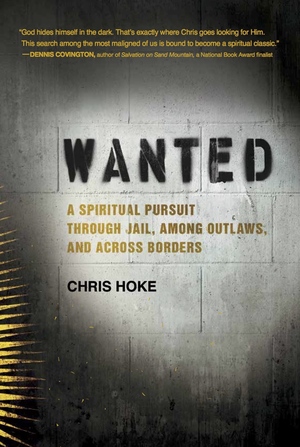 Wanted: A Spiritual Pursuit Through Jail, Among Outlaws, and Across Borders Chris Hoke (HarperOne) $25.99 I have already given an early shout out to this amazing book, too, and, again, it deserves so much more. I hardly feel like I can do it justice as it is such a moving and rare work.
Wanted: A Spiritual Pursuit Through Jail, Among Outlaws, and Across Borders Chris Hoke (HarperOne) $25.99 I have already given an early shout out to this amazing book, too, and, again, it deserves so much more. I hardly feel like I can do it justice as it is such a moving and rare work.
Hoke works with Tierra Nueva in the state of Washington, a deeply spiritual and anointed, one-of-a-kind wholistic Christian ministry started by Bob and Gracie Ekblad after they left their Latin American mission work where they were doing agricultural work, pressing for land reform, and standing up for human rights of peasants who were often persecuted by U.S. backed death squads and paramilitary police. Bob Ekblad has written two powerhouse books that we stock about his radical solidarity with the poor, Reading the Bible with the Damned and A New Christian Manifesto: Pledging Allegiance to the Kingdom of God, both published by Eerdmans ($22.00 and $20.00) and is also featured in one great chapter of Fred Bahnson’s tremendous memoir of farming and spirituality called Soil and Sacrament: A Spiritual Memoir of Food & Faith (Simon & Schuster; $26.00) Ekblad is the founder of Tierra Nueva — “new earth” of course — where Chris Hoke eventually finds a home.
Chris is a rabble rouser after Ekblad’s own heart, a young subversive who is now a coffee roaster who employs former gang members and other folks hard up on their luck, a prison worker, friend of migrants, runaways, the troubled and the damned. In this high-octane, unforgettable book he tells touching stories of his work at Tierra Nueva, showing us an inclusive and gracious way of living the Christian faith with gospel integrity. Some of our best writers about urban affairs have gushed over this moving work.
Listen to Father Greg Boyle (author of the famous Tattoos on the Heart.)
Chris Hoke’s fine book widens what needs to be widened in a world where some lives seem to matter less than others. What he so eloquently articulates is the erasure of margins and the birth of a new inclusion – where the demonizing cease and the disposable are no longer tossed aside. It is a book which refines one’s own heart to meet the brokenness of the other and discover your own. Exquisite mutuality.
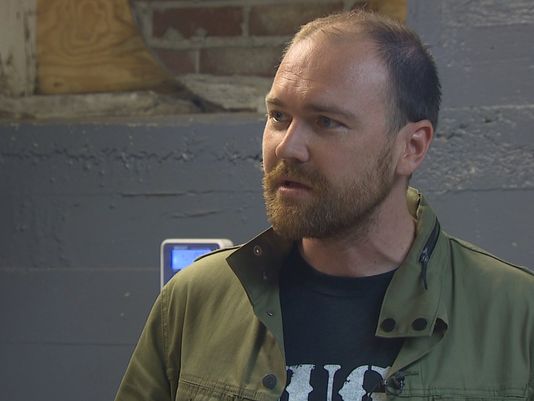 I am pretty sure most of us have rarely read anything like this. There is recent interest in prison life (Orange is the New Black, for instance) but this is the really, real deal. It is beautiful, blazing, profane and grace-filled. It is tragic and good, beautiful and broken. It is a gripping book, full of stories, human and real, full of faith and prayer and love. He calls these stories (some comic, some crazy, almost all deeply moving) “mystical portraiture” and the prose comes to us from someone who knows a bit about creative writing. (He has an MFA from the famed writing program at Seattle Pacific University.) But more than the beauty of these stories is their power to impact us. Wanted: A Spiritual Pursuit Through Jail… is very different than the narrative nonfiction of Ghettoside, in style and religious perspective and setting, but I am glad I read them back to back. You might want to, too.
I am pretty sure most of us have rarely read anything like this. There is recent interest in prison life (Orange is the New Black, for instance) but this is the really, real deal. It is beautiful, blazing, profane and grace-filled. It is tragic and good, beautiful and broken. It is a gripping book, full of stories, human and real, full of faith and prayer and love. He calls these stories (some comic, some crazy, almost all deeply moving) “mystical portraiture” and the prose comes to us from someone who knows a bit about creative writing. (He has an MFA from the famed writing program at Seattle Pacific University.) But more than the beauty of these stories is their power to impact us. Wanted: A Spiritual Pursuit Through Jail… is very different than the narrative nonfiction of Ghettoside, in style and religious perspective and setting, but I am glad I read them back to back. You might want to, too.
Listen to what some others have said about the joy and impact that reading this might have.
Scott Cairns, the wonderful Orthodox poet, writes,
Chris Hoke is what I would call a Christ-follower. He follows the path
that Jesus walked, eyes open, hands ready to help, heart ready to break.
The result is life-changing — for him, for those he serves, and for us
if we have ears to hear.
Fr. Richard Rohr (of the Center for Action and Contemplation) says,
As a former jail chaplain myself, I have yet to find a book that is so well written, so honest, and so non-naïve – and yet compassionate – about the kind of world we live in! You will live in your own world with greater courage if you read this book.
Glynn Washington, the host and creator of NPR’s Snap Judgement show has written,
When Chris first told a story on my show, it was so beautiful I wept. But I kept asking for more. This book proves what we believe at Snap – stories can lure you into places you’ve never imagined, and maybe even change your life.
And there you have it. Books can inform, they can change us as we learn new stuff, learn to see things differently. If they are well written — as are both Ghettoside and Wanted — this transformative reading experience can even be enjoyable. We can be touched, in heart and mind, and we will be better for it. I think these two books deserve those sorts of promises, and I do not hesitate to offer that sort of expectation. I know what I learned, what I appreciated, what I felt and experienced as a reader going through them. We are happy to invite you to order them from us, hoping they can be influential for you, as well.


BookNotes
DISCOUNT
ANY ITEM MENTIONED
20% off
order here
takes you to the secure Hearts & Minds order form page
just tell us what you want
inquire here
if you have questions or need more information
just ask us what you want to know
Hearts & Minds 234 East Main Street Dallastown, PA 17313 717-246-3333
